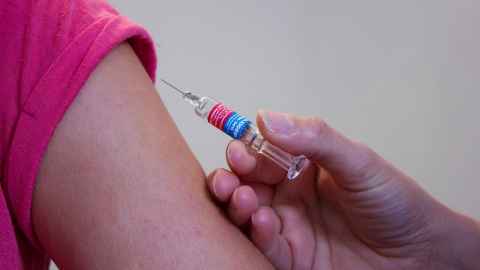Return of polio a message about vaccines
27 September 2018
Opinion: After being free of polio for 18 years, this incurable virus that causes permanent disability and sometimes death is back in Papua New Guinea, writes Dr Heather Battles from Anthropology.

The question everyone is asking is how has this happened? And here in New Zealand we may want to know what it means for us.
The cruel irony of the polio outbreak in PNG is that it has come from use of the oral poliovirus vaccine (OPV). The oral vaccine uses an attenuated (weakened) form of the live virus and is used in places with poor sanitation and poor health care infrastructure because it doesn’t require a trained professional to administer and, as it is excreted from the vaccinated person for a short time after receiving it, it can spread and passively immunize others in the community.
The problem is, in places with low vaccination rates, the attenuated virus can keep circulating and the longer it does, there is greater chance of a mutation that allows it to become virulent again and cause disease, paralysis, and death.
This is known as a circulating vaccine-derived poliovirus (cVDPV), and this is what has happened in PNG.
So far there have been 12 reported cases in PNG, including one death. The latest case was reported in the capital city, Port Moresby, which is particularly alarming to health officials due to the potential for the virus to spread rapidly through a dense urban population. The outbreak is being blamed on breakdown of the PNG healthcare system due to a funding squeeze which has resulted in the low vaccination coverage. There is now a need for immediate containment and then to get back to high immunization coverage to prevent any further outbreaks.
Since launch of the global polio eradication initiative in 1988, incidence of polio has dropped by more than 99 per cent. Today, there are three endemic countries and five additional countries with current outbreaks; 15 more are considered key ‘at-risk’ countries with low immunization rates and levels of surveillance that make their populations vulnerable should poliovirus be re-introduced. In the three endemic countries, where poliovirus transmission has never been interrupted (Nigeria, Afghanistan, and Pakistan), armed conflict has been a major factor in limiting vaccination coverage.
Despite the issues delaying eradication, we are
hopeful that we will soon see polio disappear entirely from the world.
One of the major issues facing the eradication initiative is how and when to transition from the use of OPV to IPV (inactivated poliovirus vaccine) to avoid the risk of vaccine-derived poliovirus outbreaks. IPV uses a killed virus which can’t become virulent. However, IPV is more difficult to administer – it must be injected by a trained professional, whereas anyone can deliver the oral vaccine.
Despite the issues delaying eradication, we are hopeful that we will soon see polio disappear entirely from the world – only the second human disease in history to be eradicated, after smallpox. And public health officials hope that this experience with polio vaccination and eradication will help in preventing other diseases.
We have just passed the 100th anniversary of the first New Zealand polio epidemic in which the disease swept through the country in 1916 in the midst of the First World War. That epidemic claimed the lives of 125 New Zealanders, and hundreds of survivors underwent orthopedic and rehabilitative treatment for many years afterwards. From that epidemic to the last in 1961, there were nearly 800 reported deaths and almost 10,000 reported cases of polio in New Zealand. Many more cases went unreported.
After the introduction of the first effective polio vaccine developed by Jonas Salk in the 1950s, polio incidence declined and the public in many countries became complacent about vaccination. Polio outbreaks continued to occur as the threat no longer seemed so immediate. The introduction of the oral Sabin vaccine in the early 1960s ended the epidemic cycle in New Zealand and elsewhere, but in the meantime preventable cases and deaths had occurred. We need not continue to make the same mistake.
There is no cure for polio – only prevention, and support for polio survivors and families. Since 2002, New Zealand does not use OPV, only IPV – but that doesn’t mean we can be complacent. Until, like smallpox, polio is one day consigned to the history books, the cliché applies: polio is only a plane ride away. News of the outbreak in PNG reminds us not only of the importance of vaccination, whether when travelling abroad or staying at home in New Zealand, but also of the critical role of strong healthcare systems.
Dr Heather Battles is a lecturer in anthropology at the University of Auckland and researches infectious diseases and epidemics.
Used with permission from Newsroom, Return of polio a message about vaccines published on 27 September 2018.
This article reflects the opinion of the author and not the views of the University of Auckland.